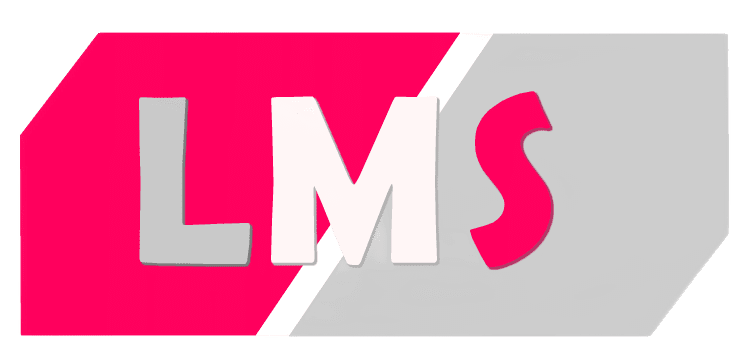What Is Transcription


In the ever-evolving digital landscape, where information is exchanged at the speed of light, the demand for accurate and efficient methods of documenting spoken words has never been greater. Transcription, a process that involves converting audio or video content into written text, plays a pivotal role in various sectors, from journalism to healthcare and beyond. In this comprehensive guide, we delve deep into the world of transcription, exploring its significance, applications, and the intricacies that make it an indispensable tool in today’s fast-paced world.
What Is Transcription


Transcription, in its simplest form, is the act of converting spoken language into written text. It’s like taking a recording of a conversation, interview, podcast, or any spoken content and transforming it into a readable and accessible format. Transcriptionists, often skilled professionals, transcribe audio or video files with remarkable precision, ensuring that every word, pause, and inflection is faithfully represented in the written document.
The Importance of Accurate Transcription


In an era where information is abundant, accuracy is paramount. Accurate transcription serves a multitude of purposes:
Legal Documentation
Transcripts of court proceedings, depositions, and legal interviews are crucial for legal professionals. They serve as a record of events and discussions, aiding in the pursuit of justice.
Medical Records
In the healthcare industry, transcription is essential for maintaining accurate patient records. Physicians, nurses, and medical staff rely on transcriptions to document patient histories, diagnoses, and treatment plans.
Media and Journalism
Journalists and media professionals use transcription services to transcribe interviews, press conferences, and news reports. This enables them to create accurate news articles, documentaries, and podcasts.
Academic Research
Transcription plays a pivotal role in academic research. Researchers transcribe interviews, focus groups, and qualitative data to analyze and draw conclusions.
Content Accessibility
Transcripts make digital content more accessible to a wider audience. They are invaluable for individuals with hearing impairments and for improving search engine optimization (SEO) by making audio and video content searchable.
Exploring Types of Transcriptions


In the ever-evolving digital landscape, transcription services have become an indispensable tool for various industries and individuals alike. At its core, transcription involves converting audio or video content into text format, making it accessible, searchable, and usable. In this comprehensive guide, we delve into the various types of transcriptions, shedding light on their significance, use cases, and the advantages they bring to the table.
1. General Transcription
General transcription is the most common form of transcription, encompassing a wide range of subjects and industries. It involves transcribing spoken words from audio or video recordings into a written format. This type of transcription serves diverse purposes
Use Cases:
Academic Research: General transcription is invaluable for researchers who need to analyze interviews, focus groups, or lectures.
Content Creation: Content creators often rely on general transcription to produce written versions of their podcasts, webinars, or video content for blog posts, articles, or subtitles.
Legal Proceedings: In the legal field, transcriptions of court hearings, depositions, and witness testimonies are essential for documentation and analysis.
2. Medical Transcription
Medical transcription is a specialized field that deals with transcribing medical reports, dictations, and patient records. Accuracy and adherence to medical terminology are of paramount importance in this type of transcription
Use Cases:
Healthcare Documentation: Physicians and healthcare professionals rely on medical transcription to maintain comprehensive patient records, ensuring continuity of care.
Research and Studies: Medical researchers often transcribe interviews and case studies, aiding in data analysis and publications.
3. Legal Transcription
Legal transcription involves transcribing legal documents, court proceedings, and legal audio or video recordings. Precision and legal expertise are critical in this domain
Use Cases:
Law Firms: Legal professionals use transcription services for transcribing depositions, affidavits, court hearings, and legal dictations.
Archiving: Legal transcription ensures that important legal documents are archived accurately for future reference.
4. Business Transcription
Business transcription plays a pivotal role in corporate environments by converting meetings, interviews, and conference calls into text form
Use Cases:
Meeting Records: Businesses use transcription to maintain accurate records of meetings, which can be vital for decision-making, compliance, and accountability.
Market Research: Transcription helps companies analyze customer feedback, focus group discussions, and interviews to gain insights into market trends.
5. Verbatim Transcription
Verbatim transcription involves capturing every spoken word, including fillers, stutters, and background noises. This type of transcription is often used in legal and research settings for precise documentation:
Use Cases:
Court Transcripts: Verbatim transcription ensures that the court record accurately reflects the spoken words, aiding in legal proceedings.
Qualitative Research: Researchers use verbatim transcription to analyze speech patterns, emotions, and non-verbal cues in interviews and qualitative data.
6. Intelligent Transcription
Intelligent transcription leverages advanced technology, including natural language processing and machine learning, to enhance accuracy and efficiency
Use Cases:
Customer Service: Businesses use intelligent transcription to analyze customer service interactions, identify trends, and improve service quality.
Accessibility: Providing transcripts for audio and video content ensures inclusivity and accessibility for individuals with hearing impairments
The Transcription Process


Transcription is a meticulous process that requires expertise and attention to detail. Here’s a simplified overview of the transcription process
Audio Recording
The process begins with an audio or video recording of the content that needs to be transcribed. This recording can be in various formats, including digital files or analog tapes.
Transcriptionists
Skilled transcriptionists, armed with headphones and transcription software, carefully listen to the audio and transcribe it into written text. They pay close attention to accents, background noise, and nuances to ensure accuracy.
Editing and Proofreading
Once the initial transcription is complete, it undergoes editing and proofreading to correct any errors, ensure consistency, and enhance readability.
Quality Control
Quality control checks are essential to maintain the highest level of accuracy. Transcripts are reviewed and verified for completeness and precision.
Delivery
The final transcript is delivered in the desired format, whether as a text document, captioning for videos, or in any other specified format.
The Transcription Process


As technology advances, it has significantly impacted the transcription industry. Automatic Speech Recognition (ASR) technology, powered by artificial intelligence, has made significant strides in transcribing audio content. While ASR can be a valuable tool, it’s important to note that human transcriptionists still offer a level of accuracy and context that automated systems cannot match.
At LMS (Language and Marketing Services), we understand the evolving landscape of transcription services. We offer professional transcription services that combine the precision of technology with the expertise of human transcribers. Our team ensures that your audio content is transcribed accurately and with the necessary context, regardless of the industry or purpose.
In today’s information-driven world, transcription is not just a service but a necessity. Its applications span across various industries, each relying on accurate and efficient transcription services to document and disseminate information. Whether it’s for legal, medical, academic, or media purposes, transcription plays a vital role in ensuring that spoken words are not lost to time but are preserved in written form.
Choose LMS for all your transcription needs, and experience the perfect blend of technology and human expertise to deliver transcription services that meet the highest standards of accuracy and context. With LMS, your words are not just transcribed; they are preserved, understood, and ready to serve their intended purpose.

